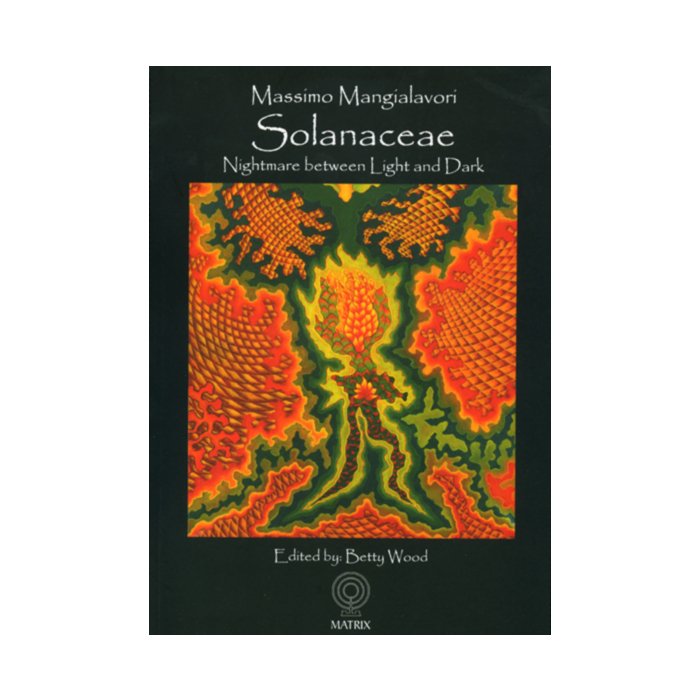OUT OF PRINT: Solanaceae
Delen op sociale media
Not constrained by a botanical family, Massimo Mangialavori broadens the scope of this group to other remedies such as Lyssinum, Gallicum acidum, Tanacetum that share the fundamental themes with other Solanaceae remedies such as Belladonna, Stramonium, Hyosciamus, as well less represented remedies such as Mandragora, Solanum nigrum and Solanum tuberosum aegrotans. The non-toxic Solanaceae: Capsicum, Dulcamara, Tabacum, Lycopersicum and Solanum tuberosum are also presented and compared with the other Solanaceae.
With a fresh outlook and characteristic precision, Dr. Mangialavori refines our understanding of this group of substances from a meticulous analysis of his cured cases as well the classic homeopathic literature. In true Renaissance fashion, Dr. Mangialavori weaves his broad knowledge and experience of anthropology, biology, botany, medicine, psychology, history, mythology and the Classics for a fuller understanding of homeopathic medicines as well the study of humankind.
This book is in English and German. Under the supervision of Massimo Mangialavori Betty Wood, MD edited this book from transcription of class hosted by the New England Homeopathic Academy in 2006.
| ISBN | 9788888799018 |
|---|---|
| Auteur | Massimo Mangialavori |
| Type | Hardback |
| Taal | English |
| Publicatiedatum | 2007-01-01 |
| Pagina's | 354 |
| Uitgever | Matrix |
| Recensie | This book review is reprinted from Volume 20, Winter 2007 Edition,with permission from Homeopathic Links. Reviewed by Francis Treuherz, UK This is a fascinating book full of erudite and sensitive insights into the family of Solanaceae and a few other remedies, around twenty in all. It is an edited report of a seminar. The work comprises 25 chapters and an index. There are materia medica, differential diagnosis, and discussions of themes such as laterality or hierarchy of symptoms. There is also question and answer with the participants. The remedies include the obvious such as Belladonna, Capsicum, Dulcamara, Hyoscyamus, Lycopersicum, Mandragora, Solanum nigrum, Solanum tuberosum aegrotans, Stramonium, Tabacum. Also included are some unrelated remedies which the author considers are related, at least he sees some similarities: Gallic add and Tanacetum; and Lyssin which seems to be a miasmatic remedy for this hydrophobic family. Among the things missing is an introduction to the book by the editor. How did she set about the editing, were the cases on video, who are the people referred to by their initials in the commentary? The editing is uneven: the appreciative foreword by Bill Gray is a forward (sic) and the spelling of Solanaceae is inconsistent. What is also missing is an indication from the author about what he was trying to achieve, what the learning objectives for the seminar were, the justification for extending the family beyond the Solanaceae (I found this eventually in answer to a question on page 212), and how he managed to teach in English about Italian patients. On the other hand the charts and uses of MacRepertory are very helpful. As for the book's essentials, the insights into the remedies and the cases used are fascinating and I already have an idea for a patient with whom I am stuck. There are a total of 10 such volumes with different editors and I am resolved to plough through them all and overlook my desire to see all the remedies in their "correct" families. Here we have the work of a doctor and a scholar who has managed to introduce experience and wisdom from anthropology, psychology and biological science as well as homeopathy. He has expanded our art of healing, and the editors have assisted us to cross the linguistic barriers as smoothly as possible. |
Recensie
This book review is reprinted from Volume 20, Winter 2007 Edition,with permission from Homeopathic Links.
Reviewed by Francis Treuherz, UK
This is a fascinating book full of erudite and sensitive insights into the family of Solanaceae and a few other remedies, around twenty in all. It is an edited report of a seminar. The work comprises 25 chapters and an index. There are materia medica, differential diagnosis, and discussions of themes such as laterality or hierarchy of symptoms. There is also question and answer with the participants.
The remedies include the obvious such as Belladonna, Capsicum, Dulcamara, Hyoscyamus, Lycopersicum, Mandragora, Solanum nigrum, Solanum tuberosum aegrotans, Stramonium, Tabacum. Also included are some unrelated remedies which the author considers are related, at least he sees some similarities: Gallic add and Tanacetum; and Lyssin which seems to be a miasmatic remedy for this hydrophobic family.
Among the things missing is an introduction to the book by the editor. How did she set about the editing, were the cases on video, who are the people referred to by their initials in the commentary? The editing is uneven: the appreciative foreword by Bill Gray is a forward (sic) and the spelling of Solanaceae is inconsistent. What is also missing is an indication from the author about what he was trying to achieve, what the learning objectives for the seminar were, the justification for extending the family beyond the Solanaceae (I found this eventually in answer to a question on page 212), and how he managed to teach in English about Italian patients. On the other hand the charts and uses of MacRepertory are very helpful.
As for the book's essentials, the insights into the remedies and the cases used are fascinating and I already have an idea for a patient with whom I am stuck. There are a total of 10 such volumes with different editors and I am resolved to plough through them all and overlook my desire to see all the remedies in their "correct" families. Here we have the work of a doctor and a scholar who has managed to introduce experience and wisdom from anthropology, psychology and biological science as well as homeopathy. He has expanded our art of healing, and the editors have assisted us to cross the linguistic barriers as smoothly as possible.


